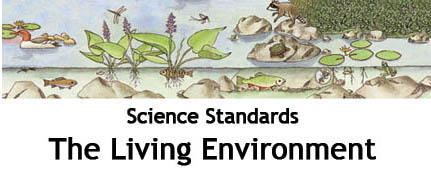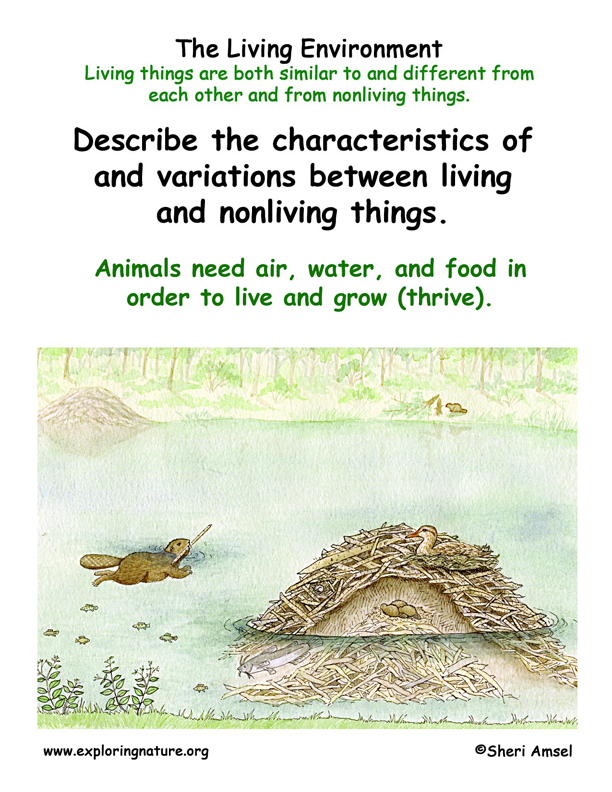

Students will understand and apply scientific concepts, principles, and theories pertaining to the physical setting and living environment and recognize the historical development of ideas in science.
Living things are both similar to and different from each other and from nonliving things.
“There are basic characteristics, needs, and functions common to all living things. Nonliving things are present in nature or are made by living things. Younger students’ ideas about the characteristics of organisms develop from their basic concepts of living and nonliving things. As students are given opportunities to observe and classify living and nonliving things, they should be reminded that living and nonliving things are sometimes given attributes they do not really have. Understanding the variety and complexity of life and its processes can help students develop respect for their own and for all life. It should also lead them to better realize the value of all life on this fragile planet.” From the Elementary Science Core Curriculum Guidelines
Describe the characteristics of and variations between living and nonliving things.
1.1a Animals need air, water, and food in order to live and thrive.

